Blog
28 July 2022

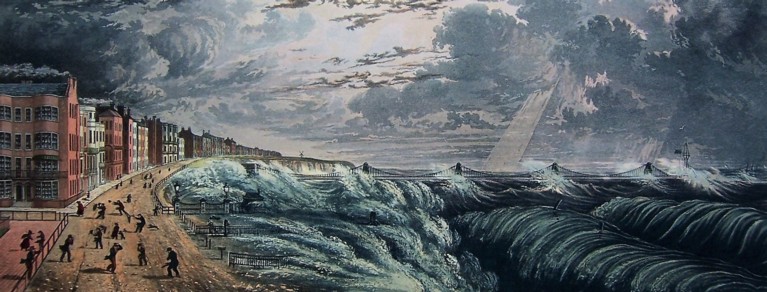 Above: A Nice Day Out: ‘Brighton Chain Pier in a Storm’ (1824); C. & R. Sicklemore, Sickelmore’s Views of Brighton (1827).
Above: A Nice Day Out: ‘Brighton Chain Pier in a Storm’ (1824); C. & R. Sicklemore, Sickelmore’s Views of Brighton (1827).
Jane Austen’s unfinished last novel Sanditon – satirizing society in the new seaside resorts of her era – has spawned a popular historical-drama TV series, witnessing to our two-centuries-old, on-off love-affair with the British seaside resort, which is well-attested in the College’s Graham Watson Collection of illustrated books.
Emmanuel’s collection is rich in hand-coloured illustrations of the various, previously humble fishing villages and small ports that were busily reinventing themselves as fashionably elegant resorts, here depicted with as many picturesque features as possible.
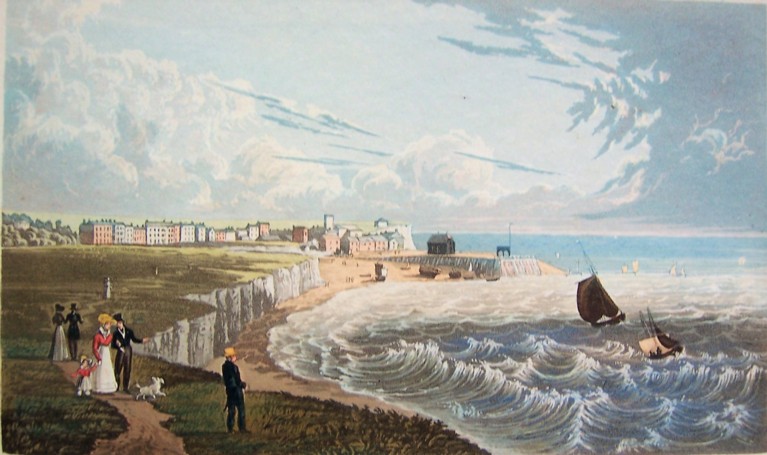
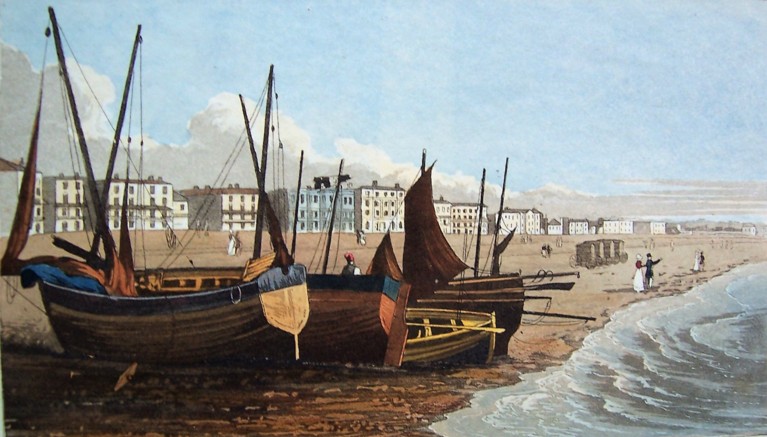
Above: Robert Havell, The Tour or Select Views on the Southern Coast (1827): ‘Broadstairs’ and ‘Worthing’.
Accustomed as today’s visitors are to all the layers of subsequent development, it is striking to see the rawness of new promenades of Classical terraces thrown up between the cliffs and the sea at Hastings, or to observe development spreading back rapidly inland from the sea at Torquay.
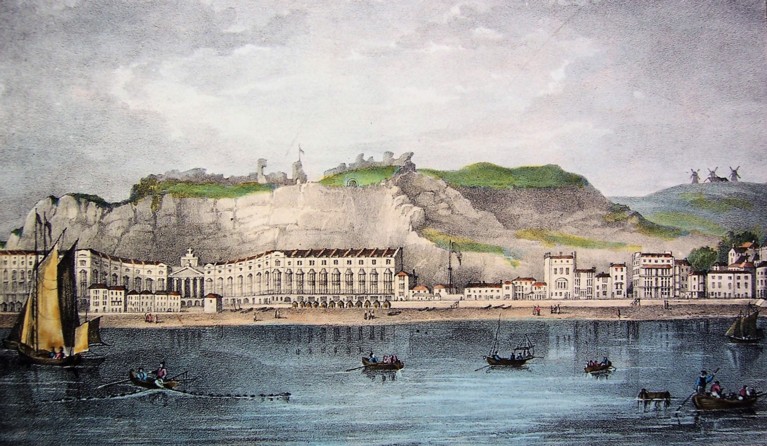
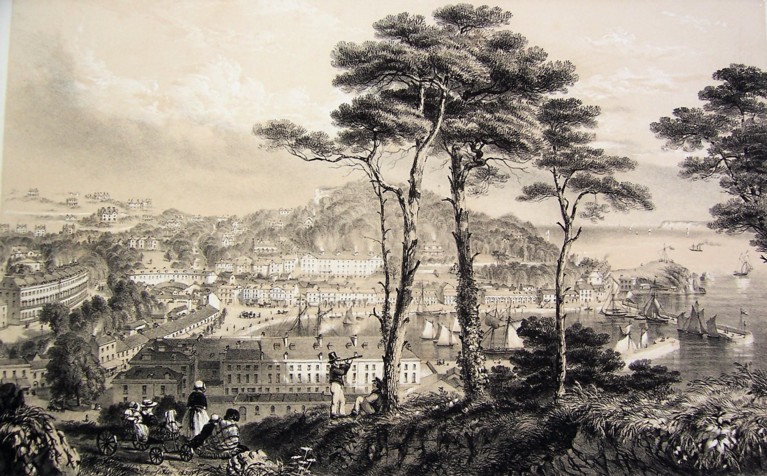
Above: Thomas Ross, Ross’s Views of Hastings and St Leonards (1830), ‘Marine Parade, Hastings’; John Salter,Views of Torquay (c.1850), ‘Torquay from Waldon Hill’.
Part of the seaside’s popularity was the new craze for sea-bathing. But polite persons needed to use a bathing machine. This was a kind of bathing hut on wheels, which was drawn out into the sea by horse, so that the said polite person could then plop into the sea unseen in decent privacy. A book illustrating the delights of Scarborough – rebranding itself as another fashionable new resort – shows bathing huts in operation, with a naked bather entering the sea.
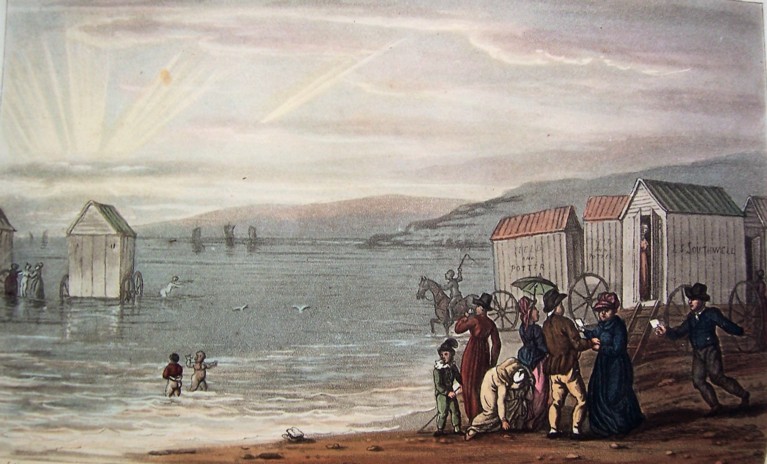
Above: Poetical Sketches of Scarborough: Illustrated with Twenty-One Engravings of Humorous Subjects (1813): ‘Sea Bathing’.
Below: Gallery of Fashion, September 1797.
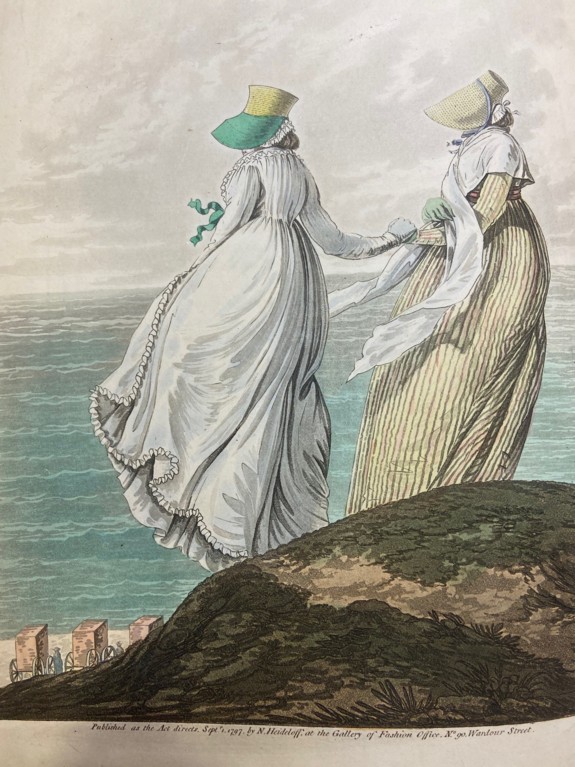
In Nicholaus Heideloff’s Gallery of Fashion two young ladies look down from a cliff top on a beach with rows of bathing machines and their attendants.
Heideloff’s illustrated fashion monthly includes a number of must-have outfits to be worn by the most elegantly-dressed at the seaside.
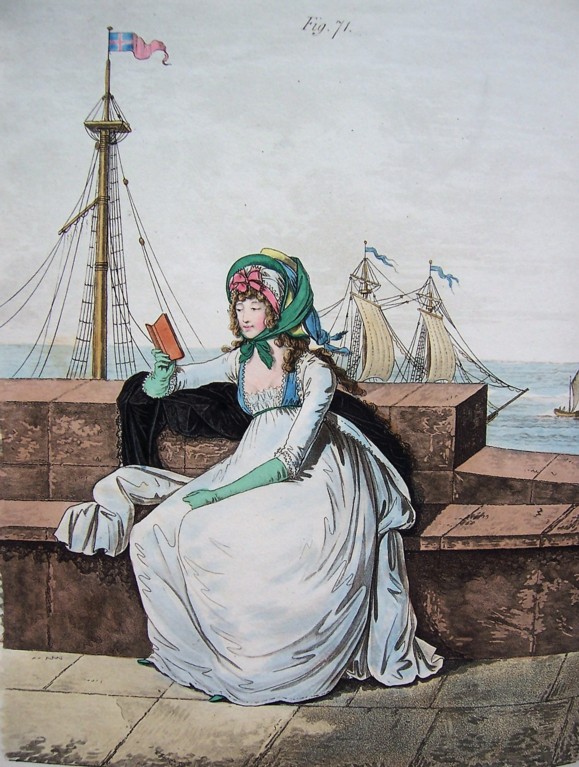
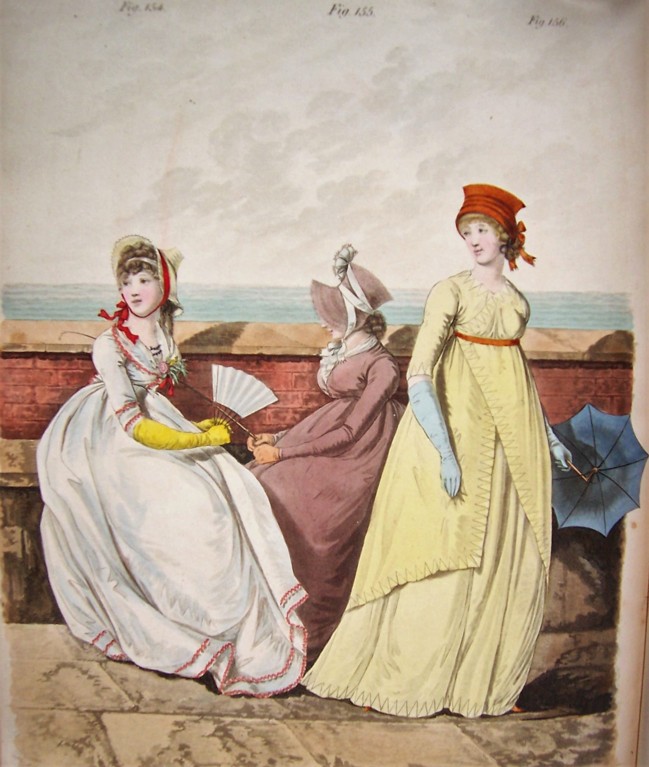

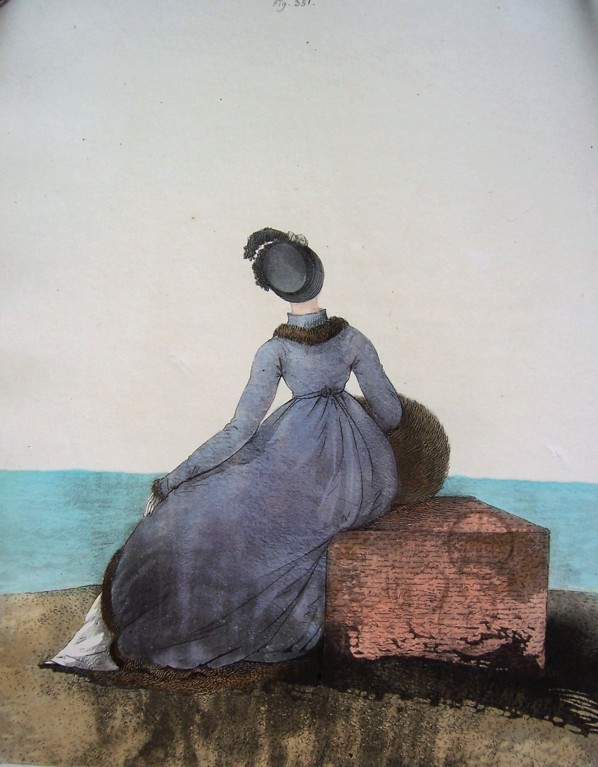
Above: Gallery of Fashion, October, 1795; August 1798; October, 1800; November 1802.
Illustrated books on seaside resorts serve to record the beauty that their times had newly discovered and valued, such as the beautiful location of Sidmouth in East Devon or the picturesque scenery of the Isle of Wight.
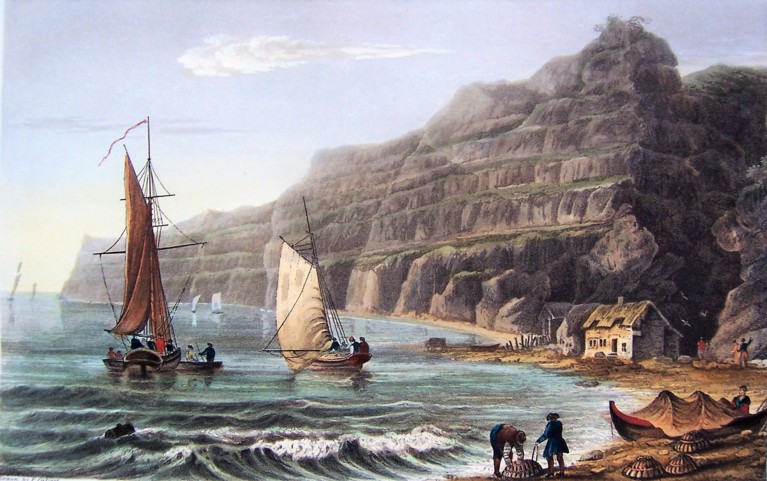
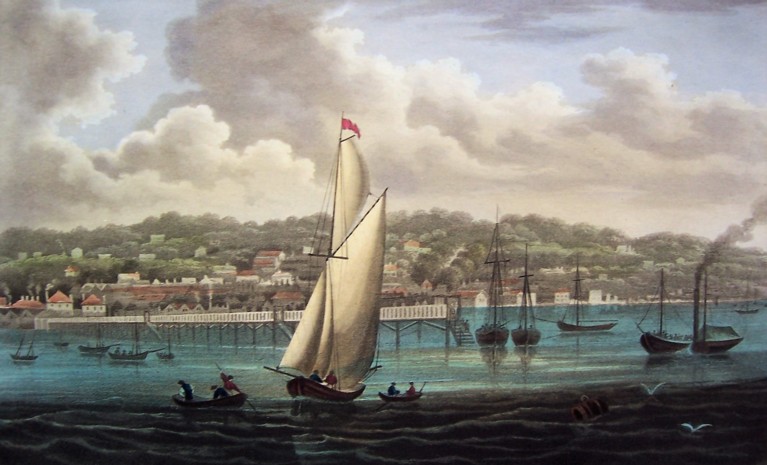
Above: P. Roberts and F. Calvert, The Isle of Wight Illustrated (1846): ‘Shanklin Bay’ and ‘Ryde’.
The attractions of piers (as in this one at Ryde) are often extolled, because they enable healthful promenades out into the sea air, well-provided too with seating and railings.
Alas, the other constant of being beside the sea is the weather. An illustration of the picturesque Allum Bay on the Isle of Wight – a tourist destination from the late eighteenth century – suggests it might turn out to be one of those damp days by the sea.
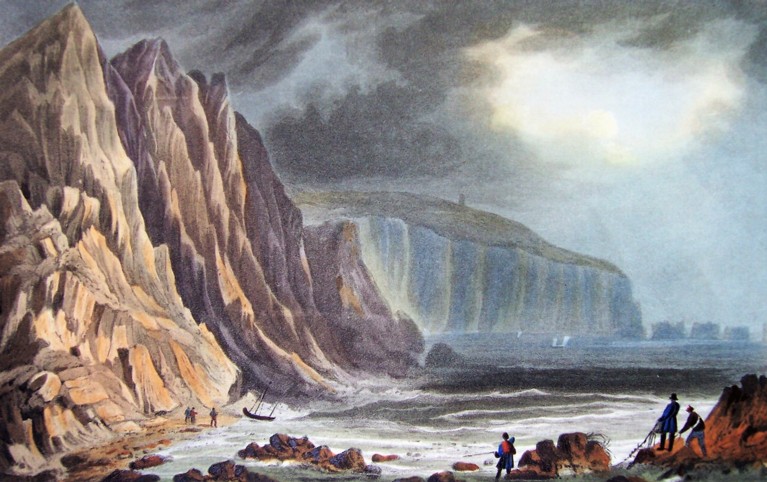
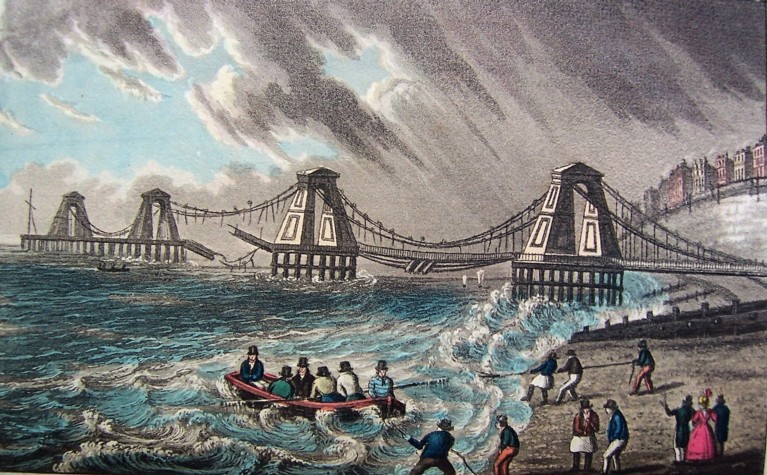
Above: Isle of Wight Illustrated, ‘Allum Bay’; John Bruce, The History of Brighton, with the Latest Improvements to 1834 (1835), ‘Situation of the Chain Pier on the Morning after the Tempest, October 1833’.
The famous Chain Pier at Brighton – painted by both Constable and Turner – was damaged by lightning in a storm in 1833 (as shown here), and eventually swept away by a storm in 1896.
Barry Windeatt (Keeper of Rare Books)
Images by Helen Carron (College Librarian)
